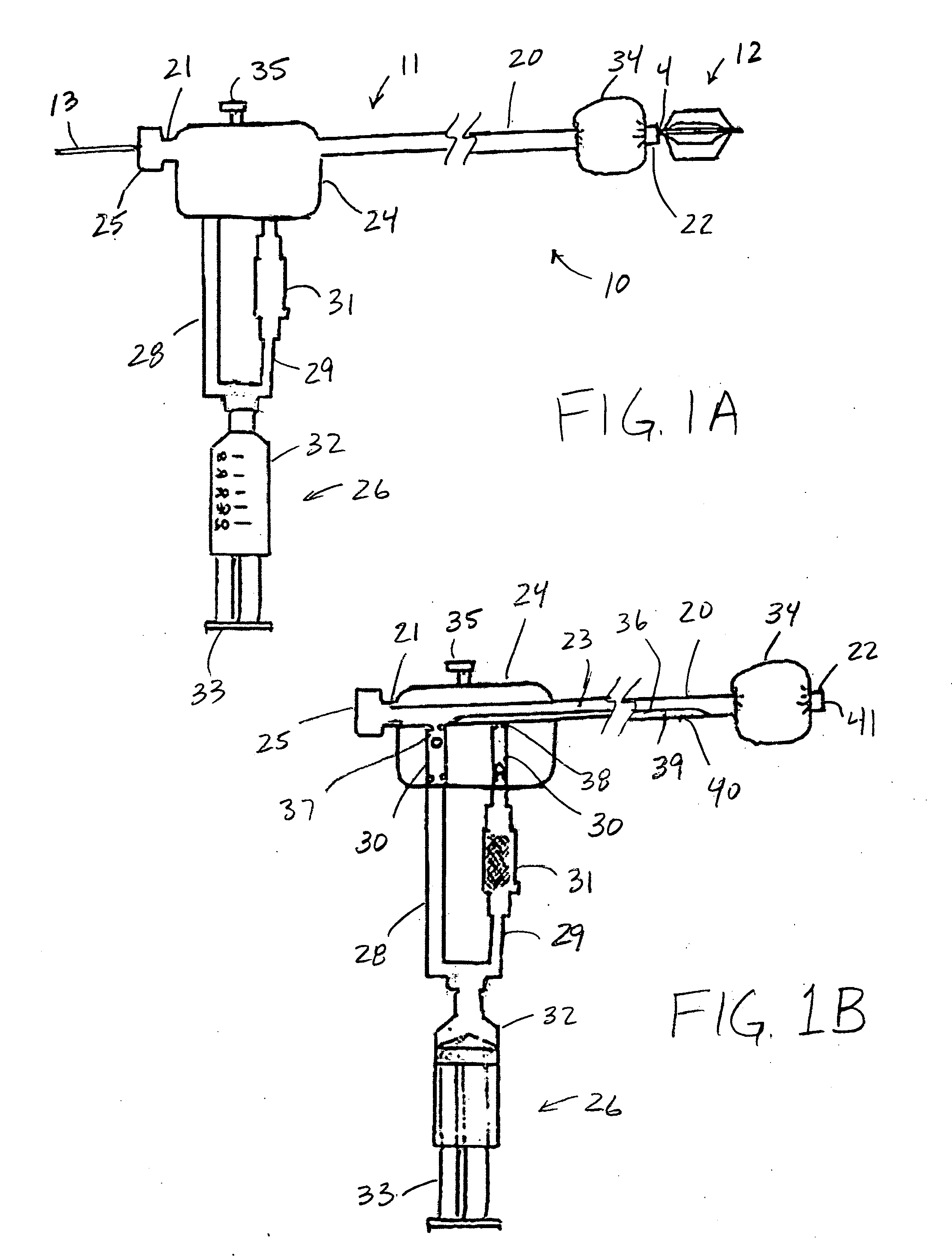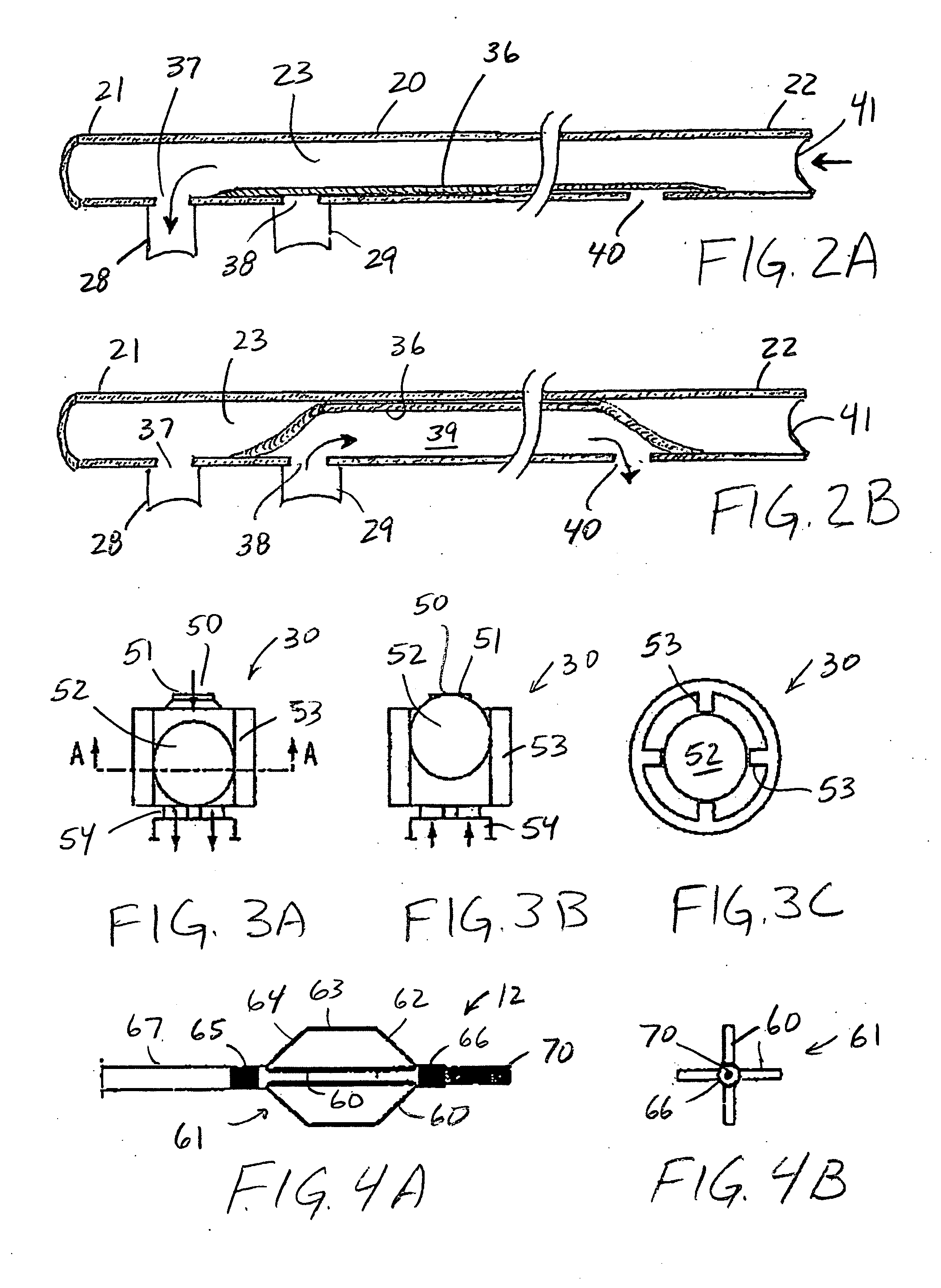Embolic protection and plaque removal system with closed circuit aspiration and filtering
a plaque removal and embolism technology, applied in the direction of dilators, operating means/releasing devices of valves, catheters, etc., can solve the problems of affecting the efficiency of blood flow, the risk of infarction or stroke, and the system described in imran, so as to prevent the intermingling of filtered and unfiltered blood and reduce the risk of damage to the vessel lining
- Summary
- Abstract
- Description
- Claims
- Application Information
AI Technical Summary
Benefits of technology
Problems solved by technology
Method used
Image
Examples
Embodiment Construction
[0030] The present invention is directed to embolic protection apparatus and methods comprising a catheter that provides closed circuit aspiration and filtering during an interventional procedure, such as angioplasty, atherectomy or stent delivery. The catheter is configured to occlude a blood vessel to arrest antegrade flow during the interventional procedure, and to aspirate emboli-laden blood from a treatment site, filter it, and reperfuse the filtered blood to the patient's vessel proximal to the occlusion element. Advantageously, the inventive apparatus permits filtration and reperfusion of blood to a patient with minimal blood loss and without requiring a separate access to enable reperfusion. A self-centering atherectomy device also is provided for use with the embolic protection apparatus.
[0031] Referring to FIGS. 1A and 1B, embolic protection and plaque removal apparatus constructed in accordance with principles of the present invention is described. Apparatus 10 comprises...
PUM
 Login to View More
Login to View More Abstract
Description
Claims
Application Information
 Login to View More
Login to View More - R&D
- Intellectual Property
- Life Sciences
- Materials
- Tech Scout
- Unparalleled Data Quality
- Higher Quality Content
- 60% Fewer Hallucinations
Browse by: Latest US Patents, China's latest patents, Technical Efficacy Thesaurus, Application Domain, Technology Topic, Popular Technical Reports.
© 2025 PatSnap. All rights reserved.Legal|Privacy policy|Modern Slavery Act Transparency Statement|Sitemap|About US| Contact US: help@patsnap.com



